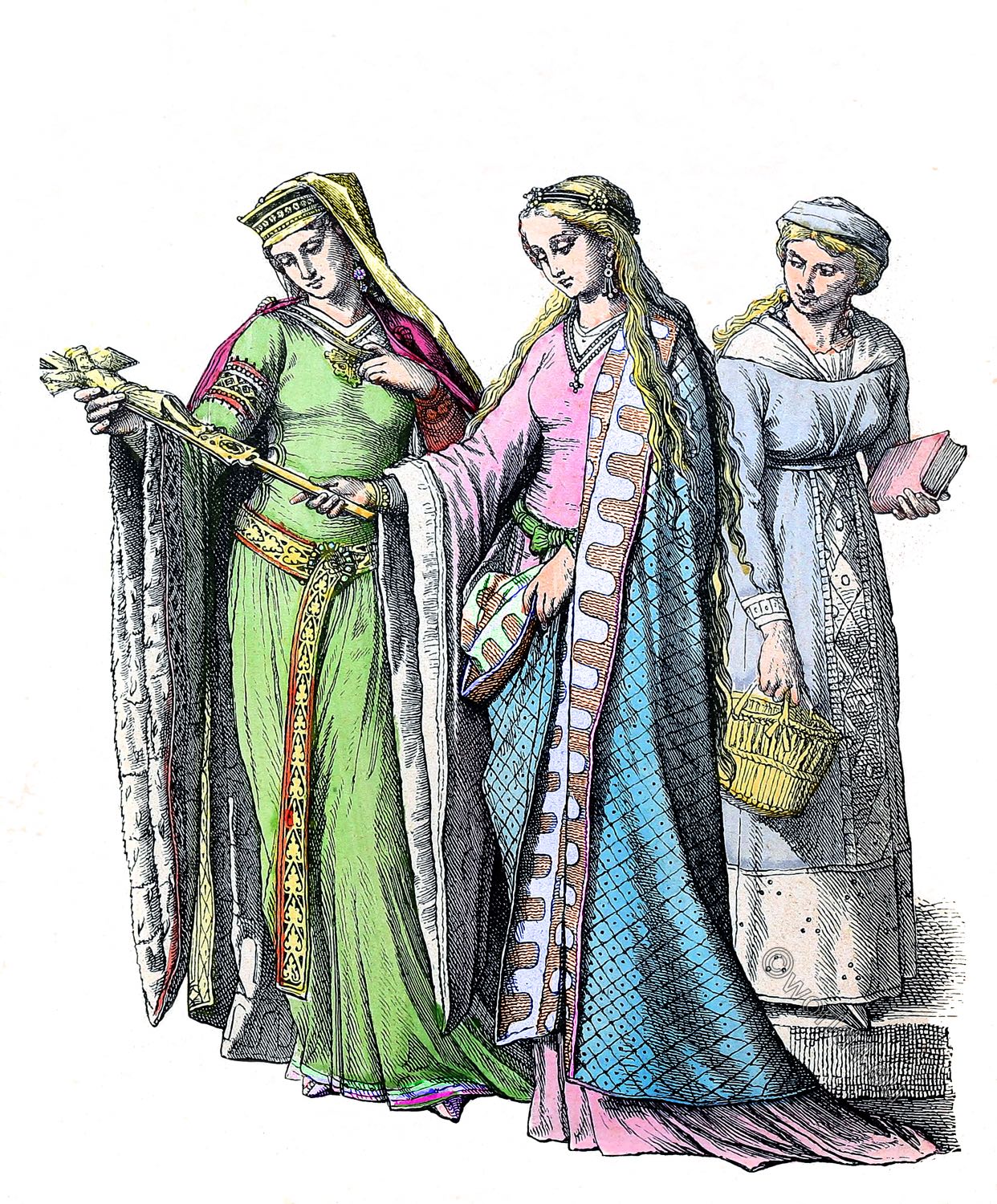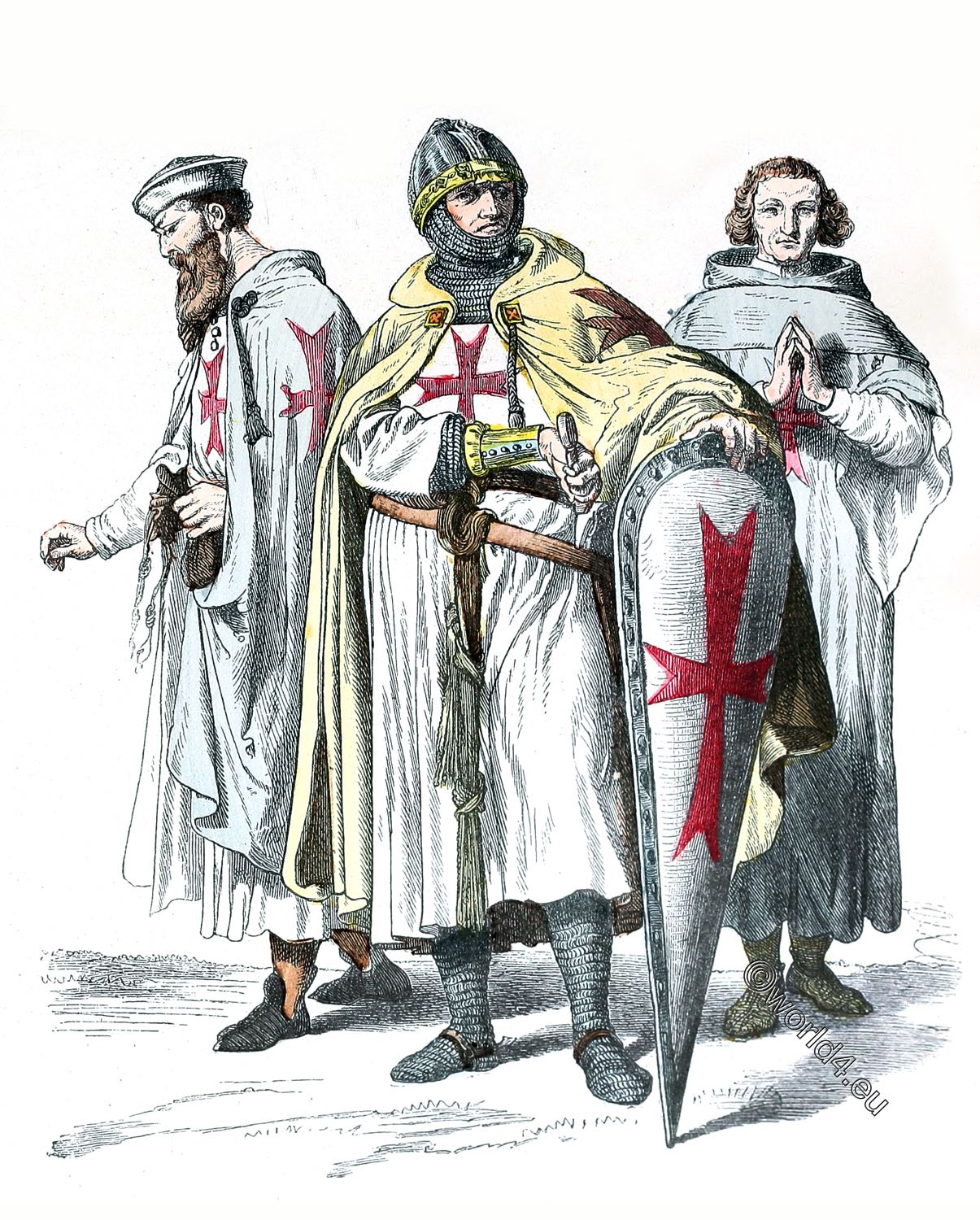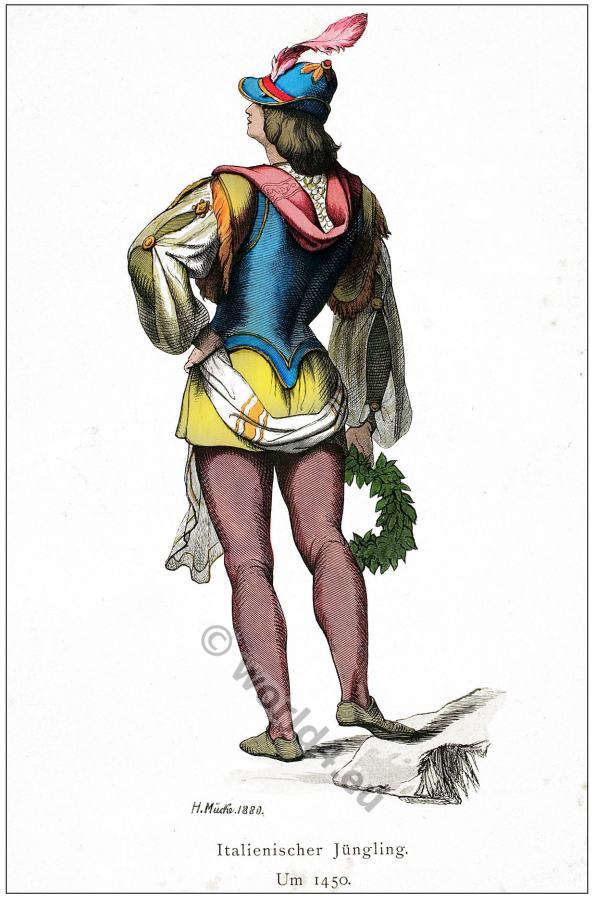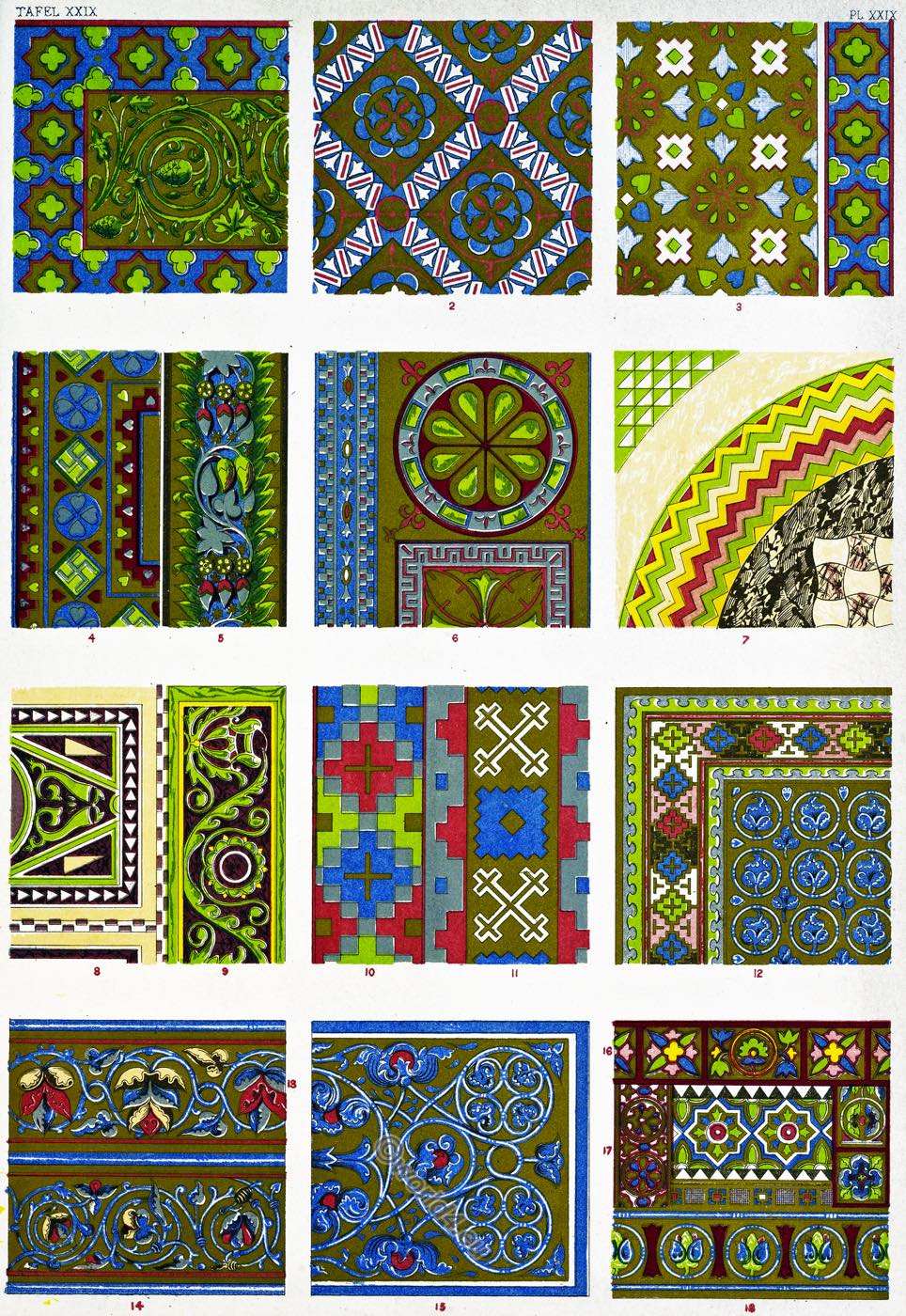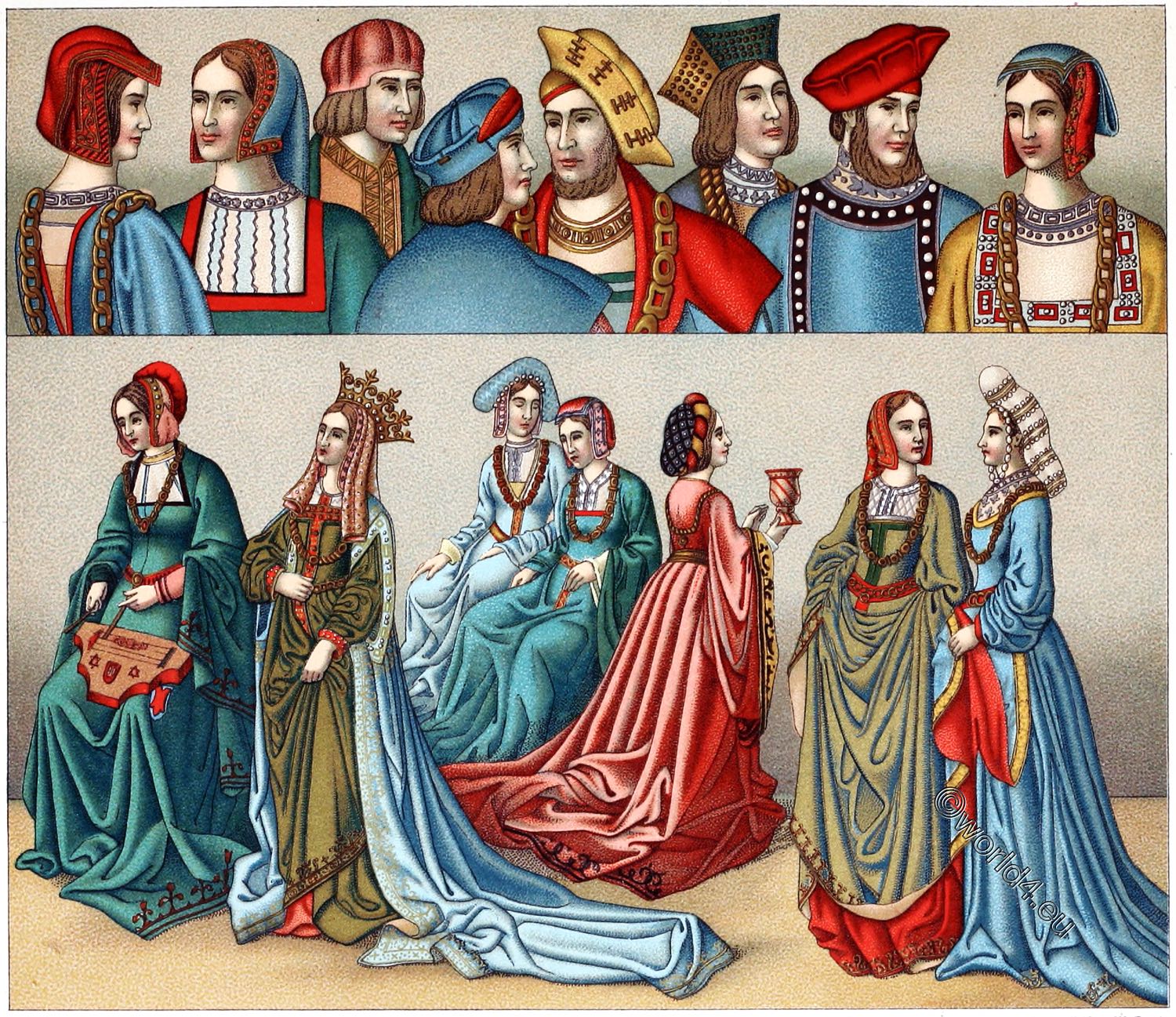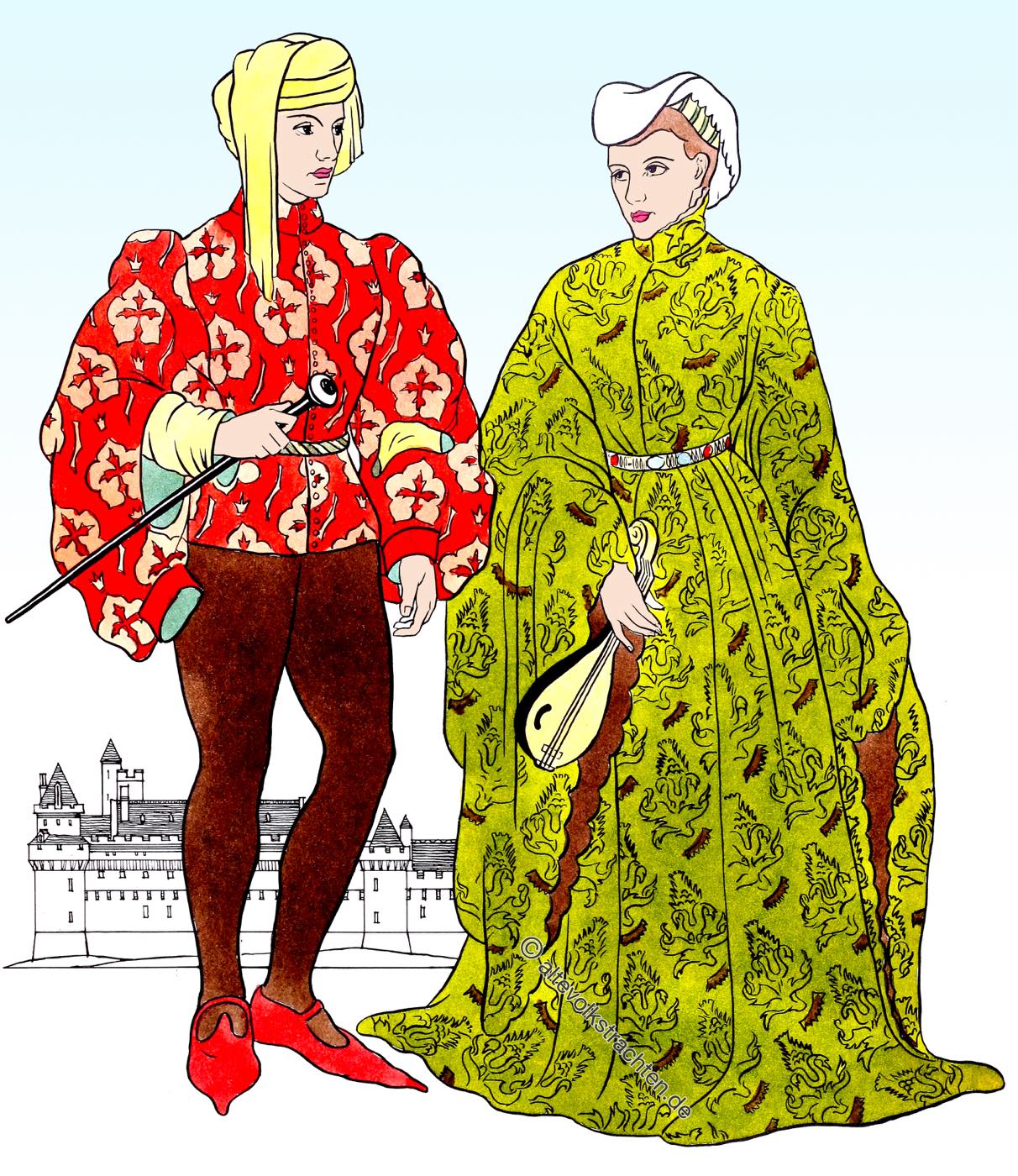
FIFTEENTH CENTURY – PLATE NO 30
Cotehardie and houpelande. Burgundy Fashion of the Middle Ages.
The man shown on this plate is wearing a cotehardie that has adopted its main characteristics from the houppelande. The high collar and the peculiar sleeves are, it will be recalled, very typical of the longer houppelande.
The sleeves will be recognized again and again throughout the next 200 years as the “bag sleeve.” They are cut very full in the body but narrow down to an almost normal wrist. Down the center of each sleeve is a large opening or slash through which the arm is often placed. This peculiar type of sleeve occurs on many types of garments especially on outer garments.
Under the cotehardie this man is wearing the same type of garment the man on Plate 29 is wearing under his houppelande — that is a doublet or gipon, as it was called, to which were laced his hose.
The chaperon, sewn in this case to resemble a turban, and the long pointed shoes complete a typical ensemble of the early 15th Century.
The woman is wearing a much more usual style of houppelande. Notice how it is pleated at the waist and how it trails on the ground. The high fur lined collar fits closely around the back of the head and was probably stiffened with wire or whalebone. The sleeves on her houppelande are known as angels’ sleeves because of their shape, which resembled wings. From a comparatively normal armhole they widened out into a voluminous, very wide cuff. If she held her arms out sideways the sleeves would look like two large right triangles standing on their apexes. Note that the edges of her sleeves have been dagged.
Like the headdress on the woman on Plate 29, this woman’s headdress is another common style of the period. This one is called the heart-shaped or horn head-dress. It was made by building up and padding the hair to form a heart shape with its widest part high on the back of the head. This shape was covered with all sorts of things—nets, veils, linen kerchiefs, roundels and sometimes a barbette. The woman is wearing a rather simple flat heart-shaped headdress trimmed with a dagged linen scarf.
Notice the patterns shown here. They are large and cover the material entirely. The man’s is probably damasked or stamped out on velvet. The woman’s is more than likely embroidered. Stylized flowers, running vines, lozenges or geometric patterns, such as the man on Plate 29 is wearing, were common patterns of the time. In addition to velvet, which was very popular, wools, linens, taffetas and even silks were all made frequent use of.
Source: Museum Extension Project.

Related
Discover more from World4 Costume Culture History
Subscribe to get the latest posts sent to your email.

